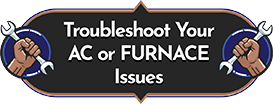A furnace is a heating System used to heat air or water. The heat it produces is used to warm a building or room, directly as in a forced-air furnace, or indirectly by heating the air before entering the building, as in an electric resistance heater.
Are you thinking of installing a furnace system? Before investing, you should know whether it is perfect for your home. You should consult our furnace service expert in Yuma, AZ, to ensure it is suitable for your home.
How does a furnace system work?
A central ignition source heats the air, passing through an envelope of slowly rotating metal elements, such as bladed vanes, which convert thermal energy into mechanical energy. The air then circulates within the ductwork and exits through vents located in exterior walls or ceilings.
Comstock Air Conditioning, Heating, and Electricals is a professional furnace service company in Yuma, AZ, and can help you choose an efficient furnace for your home.
Where is the furnace unit installed?
In most cases, furnaces are installed indoors, near heating equipment such as boilers and hot water tanks. They may be stand-alone units or part of a central heating system within a building. In both cases, they are connected to the mains electricity supply by cable and need no special wiring; they are called ‘plug-in’ devices.
High vs mid-efficiency furnace
Furnaces come in wide varieties, and they can be divided into two categories: high-efficiency and mid-efficiency.
High-Efficiency furnace
High-efficiency furnaces are more expensive than other types, but they do an excellent job of heating rooms quickly. They also have a smaller carbon footprint than other furnaces because they use less fuel to heat your home. However, high-efficiency furnaces are not so efficient at removing moisture from the air because it doesn’t work as well in humid environments like bathrooms or kitchens.
In addition to this drawback, there is also a risk that if you have a high-efficiency furnace installed in your home, you may end up with higher energy bills for replacing parts over time from a furnace repair service in Foothills, AZ.
The high-efficiency furnace has a higher efficiency rating than the mid-efficiency and standard-efficiency furnaces. It means that heat transfer occurs quickly and effectively.
Mid-Efficiency furnace
Mid-efficiency furnaces are designed for homes that require heat year-round but don’t need much air conditioning during summer; these include homes located near lakes and rivers where it’s challenging to keep cool due to high winds and humidity levels during warm weather months.
Pros and Cons
High-efficiency furnaces use less energy than mid-efficiency ones, so they can help your heating bill decrease. However, they are more expensive and, if you have a chimney flue, increase the risk of carbon monoxide poisoning.
Mid-efficiency furnaces are a good middle ground: they’re cheaper than high-efficiency furnaces but still use less energy. They’re also safer because they don’t burn as much fuel as high-efficiency models.
Conclusion
As with all furnaces, there are pros and cons to consider when buying one. They tend to cost more upfront than other types of furnaces, but they are highly efficient and can help save money in the long run by reducing your energy bill significantly over time. Contact Comstock Air Conditioning, Heating, and Electricals at (928) 783-7062 today to know more about furnace service in Yuma, AZ.


